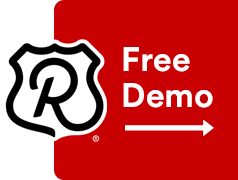Picking a trucking software provider (Transportation Management System) can be an overwhelming investment of both time and money. However, if you commit to the process, the ROI can be limitless.
Trucking software, and how software, in general, integrates with technologies, is at an innovative intersection. Today’s TMS packages should be designed to evolve, scale, and adapt with your business. If you want to be successful, you need a flexible solution AND a strong provider partnership.

WHERE TO START?
The first thing you need understand is the provider’s use of the term TMS. Is the Transportation Management Software built for shippers or carriers? Was it designed for truckload, less-than-truckload, brokers, accounting, etc.? Was it then adapted to “handle” other transportation modes? For instance, was it designed for truckload carriers, but “can be” used to handle less-than-truckload operations? Meaning it’s not an optimal solution, but it technically may work.
Next, you need to analyze each provider’s features and services, then translate these into costs. You need to learn how their TMS package integrates with other technologies or other packages used internally, such as General Ledger or a CRM. Finally, you need to ask yourself, how will the TMS provider help you with internal marketing? One of the hardest challenges you will face is introducing change and achieving company-wide buy-in of the change. TMS providers are essentially agents of change and they should have a strategy in place that will make the implementation process flow smoothly.
This may sound like more than you can tackle right now, however, data shows that it’s well worth it: In a 2016 survey ARC Advisory Group found freight savings of 8% by integrating a new TMS. Kicking the proverbial can down the road is a zero-sum strategy. Simply put, the right TMS provider will make your business capable of more; more productivity, more information, and more competitive. Assuming you pick the right provider, it should be last time you shop for a TMS package.
FACTORS TO CONSIDER
- What are your business expectations and objectives, what are your goals? Where do you want your business to be in 5 years?
- What are your pain points? This applies to personnel, daily processes, workflows, duplicate data entry, etc.
- What are your staff’s capabilities as it relates to utilizing software and technology? Will you have to hire new people to support a new TMS package? Will the TMS package allow you to rescale your staff?
- How do you see a new TMS enabling you to achieve your goals?
- Should you host the TMS package on-premises? What about an off-site third-party provider? Or should you consider the cloud?
- What do you expect from your TMS provider day-to-day, month to month, a year from now, or five to ten years down the road?
- What is the TMS provider’s LRP (long-range plan)? Are they privately owned (such as Roadvision) or are they a publicly traded company, or owned by VC’s (venture capitalists)?
- Do you trust the provider?
Now that you’re in the right mindset, let’s get to work.
Next: Getting social and doing research
Contact Us to Learn More




Comments are closed.